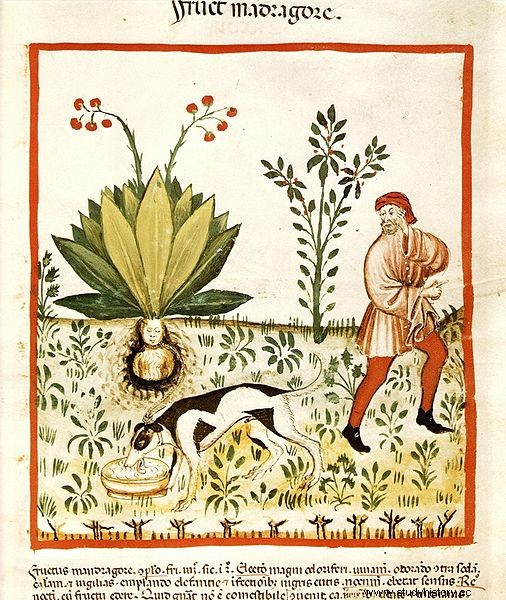
A method of harvesting the mandrake from a medieval image. The mandrake was used in large quantities by the Romans in surgery
Prior to the use of ether , the first anesthetic in the modern sense, which Crawford Williamson Long experimented for the first time, with success, in 1842 , what was used to put the patient to sleep before surgery?
In reality, the more you go back in time, the more you realize how much 'anesthesia , in ancient times, it was practiced with methods that were nothing short of "rudimentary".
Each population, of course, had its own systems.
Among the simplest (and brutal), we can include the most frequent in Mesopotamia , where patients waiting for surgery were made to lose consciousness by exerting a strong compression on the carotids.
The Egyptians, that in terms of medical knowledge they were, for the time they lived, undoubtedly evolved, they understood the importance of cold to slow down blood circulation and, consequently, decrease sensitivity to pain; snow and cold water, for this purpose, were the most used substances.
For, as is well known, medicine, magic and religion constituted a mix in Egypt of elements present in every aspect of life, thought and culture, another successful anesthetic, in the lands of the Nile, was represented by the so-called " Memphis stone ", Which thanks to the beneficial power attributed to it, was able (apparently) to soothe the patient's pain simply by crumbling it on the part to be treated.
In Ancient Rome mandrake was widely used as an anesthetic , a plant with sedative properties, replaced in the following centuries by much stronger and perhaps effective substances, including drugs (hashish and opium especially) and alcohol.
anesthesia in the Middle Ages?
A whole program:read here https://www.pilloledistoria.it/2077/medioevo/antica-medicina-lanestesia-nel-medioevo.
